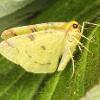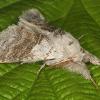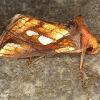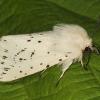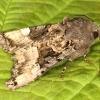Moths
Moths are generally divided into two groups: Micro moths and Macro moths. We have followed this convention in arranging the photographs of moths found in Old Hall Gardens.
We are also using the common names for moths where they have one, but some of the less common moths have only a Latin name – which may look a little cumbersome if they are unfamiliar to you.
Micro Moths
Hover over an image to see what it is; click on it to enlarge it.
All photographs were taken within Old Hall Gardens, and so far we have found the following micro moths:
Agapeta hamana, Agriphila straminella, Apple Leaf Miner, Argyresthia geodartella, Aspilapteryx tringipennella, Beautiful Plume, Yponomeuta Ermine, Bird-cherry Ermine, Bucculatrix nigricomella, Chrysoteuchia culmella, Crescent Plume, Cydia nigricana, Cydia splendana, Dichrorampha alpinana, Emmelina monodactyla, Leek Moth, Pandemis heparana, Plutella porrectella, Pseudargyrotoza conwagana, Red-barred Tortrix, Ringed China-mark.
Did you know...?
- One of the smallest moths in the world (Enteucha acetosae) is found in the UK. Its wingspan is a mere 3–4mm!
- The caterpillars of most Micros can wriggle backwards, unlike most Macros.
Moth Nights
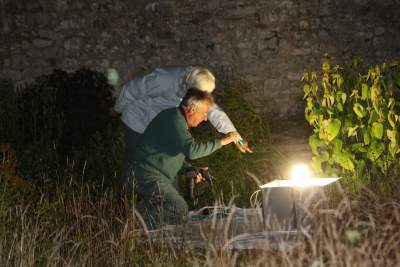
We occasionally organise 'Moth Nights', to which the public are invited. We trap the moths by attracting them to a strong light - see photo on the left, with John Sherwood and Betty Alden.
The moths are then collected in transparent specimen tubes and put in the fridge overnight. But don't worry: they don't suffer at all! The fridge temperature is around 4°C which, if you think about it, is a lot cosier than some frosty nights! This just puts the moths to sleep, and allows us to identify what they are.
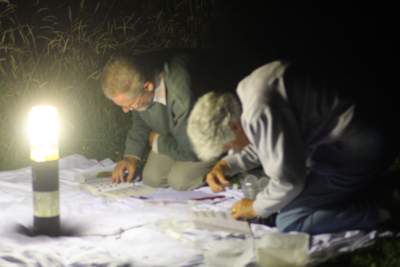
The next morning, visitors to Old Hall Gardens can come and view the moths as they wake up from their overnight sleep. They are then released back into the garden whence they came.
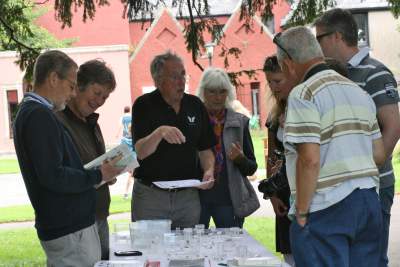
Rob and Linda Nottage collecting the moths.
The photographs of moths on a grey background were taken as a result of such a Moth Night, and hence are not shown in their natural habitat.
Macro Moths
Hover over an image to see what it is; click on it to enlarge it.
All photographs were taken within Old Hall Gardens, and so far we have found the following macro moths:
Angle Shades Moth, Antler Moth, Barred Straw, Beautiful Hook-tip, Brimstone Moth, Brown Silver-line, Brussels Lace, Buff Arches, Common Carpet, Coronet, Dingy Footman, Dot Moth, Ear Moth, Elephant Hawkmoth, Elephant Hawkmoth caterpillar, The flame, Foxglove Pug, Ghost Moth, Gold Spot, Golden-rod Pug, Green Pug, Herald Moth, Knotgrass caterpillar, Leopard Moth, Lime Hawkmoth, Lime-speck Pug, Marbled Beauty, Miller, Pale Tussock, Peppered Moth, Phoenix, Pug, Rosy Footman, Ruby Tiger, Satin Beauty, Small Angle Shades, Small Phoenix, Smoky Wainscot, Spectacle, Swallow-tailed Moth, White Ermine.
Did you know...?
- The largest moths in the UK – the Hawk Moths – are as big as a 'flying mouse', with a spectacular wingspan of up to 120mm!
- Some adult moths do not feed at all! They survive on the energy supplies stored when they were a caterpillar.
